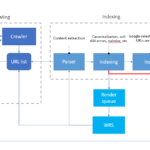Discipline vs Motivation: The Real Secret Behind Sustainable Fitness Transformation
By Coach Smita Bhatnagar | INFS Certified Nutrition & Fitness Coach
#staystrongwithsmita #fitat47 #fittrcoach
Introduction — Why Motivation Fades but Discipline Lasts
Motivation is one of the most misunderstood concepts in the fitness world.
People often assume that fit individuals wake up every day feeling excited, driven, and ready to work out.
But the truth is simple:
Motivation is a feeling.
Discipline is a habit.
Motivation comes and goes.
Discipline stays and grows.
The people who transform their bodies — whether they are 17, 35, or 47 — do not depend on motivation. They depend on systems, habits, routines, and the ability to show up even on challenging days.
In this detailed article, we will explore the science of discipline, why daily 1% efforts compound, and how you can build a sustainable fitness lifestyle without waiting for motivation.
Why Motivation Can’t Be Trusted for Long-Term Fitness Goals
Motivation Is Emotion-Driven and Easily Affected
Motivation is strongly influenced by external factors:
- Mood
- Hormonal fluctuations
- Sleep quality
- Stress levels
- Weather
- Work pressure
- Family responsibilities
This is why some days you feel unstoppable, and other days even tying your shoelaces feels heavy.
Neuroscience shows that motivation relies on dopamine, a neurotransmitter that spikes when excitement is high — new gym membership, new shoes, new meal plan.
But dopamine falls as soon as novelty fades, reducing your drive to take action.
This is why people quit within:
- 2–4 weeks of joining a gym
- 10–15 days of starting a diet
- 1–2 weeks of beginning morning walks
Motivation is inconsistent.
And anything inconsistent cannot build lasting fitness.
Discipline — The Silent Force Behind Every Transformation
Discipline Is Not Harshness; It Is Structure
Discipline is often misunderstood as strictness or rigidity.
But discipline is simply:
Doing what is needed even when you don’t feel like doing it.
It comes from:
- Pre-decided routines
- Clear goals
- Systems that support the goal
- Habit loops built over time
Unlike motivation, discipline is not emotional.
It’s logical — and predictable.
The Science Behind Habit Formation
Research in behavioral psychology shows that habits form through a loop:
- Cue (trigger)
- Routine (the action)
- Reward (the benefit)
Example:
Cue → Morning alarm
Routine → 15-minute walk
Reward → Lightness, energy, accomplishment
Over time, the brain begins to crave the reward, making the routine automatic.
This is why discipline becomes effortless after 60–90 days of repeated behavior.
The Power of “Just Showing Up” — The 1% Rule Explained
Why Micro-Actions Lead to Macro Results
Most people delay fitness because they think they need:
- 1-hour workouts
- Perfect diets
- Ideal schedules
- High motivation
But research shows that consistency beats intensity.
1% improvement every day = 37 times better in one year.
Zero effort = no progress.
Even 10 minutes of activity makes a difference by:
- Improving blood circulation
- Activating muscles
- Enhancing insulin sensitivity
- Boosting metabolism
- Increasing energy
Your brain registers that you honored your commitment — this builds identity.
And identity creates discipline.
Zero Breaks the Chain, 1% Keeps It Alive
Skipping one day is normal.
Skipping repeatedly becomes a negative habit.
Your brain starts identifying as someone who gives up easily.
But doing something small each day builds the opposite identity — the identity of a person who shows up.
The Five Core Pillars You Must Follow to Build Fitness Discipline
1. Movement — The Foundation of a Healthy Body
Movement does not always mean weight training or cardio.
It includes:
- Walking
- Cycling
- Yoga
- Mobility
- Stretching
- Light functional workouts
Benefits of Daily Movement
- Improves cardiovascular health
- Reduces risk of Type-2 diabetes
- Boosts metabolism
- Improves joint lubrication
- Enhances mood and energy
- Increases longevity
Even 8,000–10,000 steps daily are linked with 40% lower mortality risk.
2. Mindful Eating — Build a Better Relationship With Food
Eating mindfully means:
- Paying attention to hunger cues
- Avoiding emotional eating
- Chewing slowly
- Choosing whole foods
- Eating more protein and fiber
Why Mindful Eating Supports Discipline
Emotional eating creates guilt → guilt leads to quitting → quitting leads to inconsistency.
Mindful eating removes shame and helps you stay aligned.
3. Hydration — The Simplest Fat Loss Tool
Proper hydration:
- Regulates appetite
- Improves digestion
- Supports liver detoxification
- Maintains electrolyte balance
- Reduces cravings
Aim for 2–2.5 liters daily, more if you are active.
4. Sleep — The Hormonal Reset Button
Sleep is not optional — it is a biological necessity.
Poor Sleep Impacts:
- Ghrelin ↑ (hunger hormone)
- Leptin ↓ (satiety hormone)
- Cortisol ↑ (stress hormone)
- Insulin resistance ↑
This leads to:
- More cravings
- Slow fat loss
- Mood swings
- Low energy
- Reduced workout performance
Sleep discipline = fitness discipline.
5. Breathwork & Resetting — The Stress Control Method
Stress increases cortisol, which leads to:
- Belly fat
- Emotional eating
- Poor sleep
- Fatigue
Simple daily practices:
- Deep breathing
- Meditation
- 3-minute pause
- Gratitude journaling
- Light stretching before bed
These techniques reduce stress and support discipline.
Monday Alignment — Reset Your Week With One Small Choice
Choose One Habit That Keeps You Centered
- Move your body
- Eat mindfully
- Hydrate well
- Sleep on time
- Breathe & reset
You don’t need perfection today.
You only need presence.
Even Showing Up Slowly Counts
Some days you will show up with full energy.
Some days you will show up tired.
And some days you will show up silently.
What matters is you showed up.
Because 1% every day beats 0% every time.
How to Build Fitness Discipline When Motivation Is Low
Step 1 — Create Environment-Based Discipline
Your environment should support your goals:
- Keep workout clothes ready
- Keep your water bottle near you
- Keep your steps counter ON
- Keep protein sources stocked
- Remove junk foods from easy access
Your environment shapes your decisions.
Step 2 — Build a Minimum Action Plan (MAP)
Choose a daily minimum:
- 10 squats
- 15-minute walk
- 1 healthy meal
- 2 liters of water
- 10 minutes stretching
MAPs keep you consistent even on low-energy days.
Step 3 — Track Your Wins (Not Only Your Weight)
Progress tracking improves accountability.
Track:
- Steps
- Sleep hours
- Water intake
- Protein intake
- Mood
- Energy
- Workouts
- Non-scale victories (clothes fitting, strength, stamina)
Tracking builds self-awareness → self-awareness builds discipline.
Conclusion — Choose Yourself Every Single Day
No matter what mood you woke up in today, remember this:
- You don’t need to be unstoppable.
- You just need to not stop.
- You don’t need 100% effort.
- You need 1% consistency.
Discipline will take you where motivation cannot.
Choose yourself today, and every day.
Your future self is already thanking you.
Stay consistent.
Stay committed.
Stay strong — with Smita.









